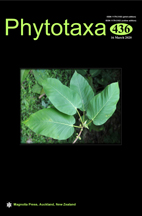Abstract
Ficus L. species are extensively diversified in India representing North-eastern states, peninsular region and Andaman and Nicobar Islands among which ten species are endemic. Thus closely related species confuses taxonomists and evolutionary researchers. Our study aims to distinguish the highly endangered closely allied species of Ficus genus with persistent variation. The first study complex includes Ficus dalhousiae and Ficus anamalayana and the second complex includes Ficus amplocarpa, Ficus guttata and Ficus laevis. The species in each complex groups are hard to distinguish because of their highly similar morphological characters. To resolve the taxonomical disputes, the nuclear loci ITS2 and chloroplast loci trnH-psbA were used to reconstruct the phylogenetic relationship to understand the species boundaries. In our results, intra-specific divergence is not found in the two markers tested however, the total inter-specific divergence between F. dalhousiae and F. anamalayana is found to be 6.5% and in the case of F. amplocarpa and F. guttata is to be 8.5%. The highest divergence is observed in trnH-psbA (0.991 ± 0.713) followed by ITS2 (0.149 ± 0.064). Bayesian analysis showed a clear segregation between F. amplocarpa and F. guttata suggesting that they could be independent species not a variety of F. laevis. Similarly, bayesian analysis of F. dalhousiae and F. anamalayana results support that they can be treated as different species. Thereby, our study suggests that species within taxonomically complex group can be resolved by DNA barcoding.

